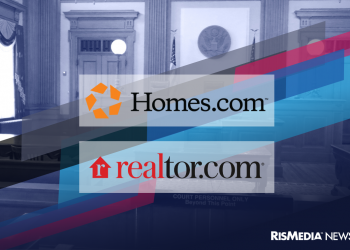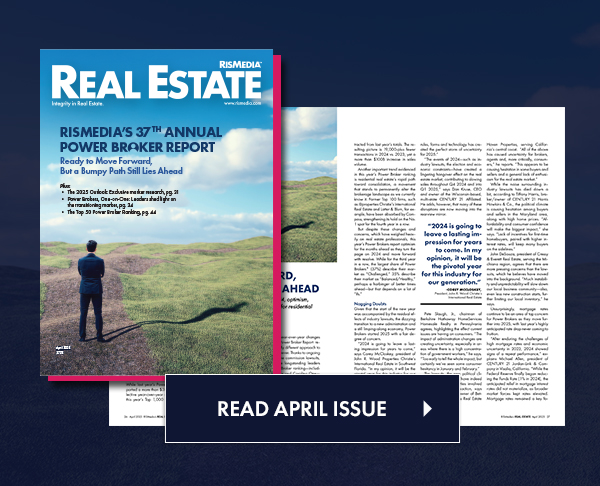Existing-home sales took another hit last month as mortgage rates and a lagging inventory have continued to plague buyers bold enough to enter the market in the current conditions. That showed in the National Association of REALTORS®’ (NAR) latest report on existing-home sales.
Sales of previously-owned homes slid by 2.2% in July to a seasonally adjusted annual rate of 4.07 million. Not only has this kept with the downward trend that has taken hold of the market amid affordability and inventory issues, pundits indicate that last month’s reading is the lowest July closed sales total since 2010.
Year-over-year sales also took a hit, dipping by 16.6% compared to last year—down from 4.88 million in July 2022.
Regionally, all analyzed areas saw annual declines in home sales compared to the same period last year. However, the West was the only area that saw a monthly increase in sales.
Single-family home sales dipped 16.3% annually, while the median cost for a home in the category rose 1.6% to $412,300.
Condos and co-op sales activity weren’t much better as the segment slid 19.2% year-over-year. The median cost of an existing condo or co-op—while lower than a single-family home—rose 4.5%, hitting $357,600 last month.
Key Metrics
- Total housing inventory was 1.11 million units, up 3.7% from June, but down 14.6% YoY.
- Unsold inventory sits at a 3.3-month supply at the current sales pace, up from 3.1 months in June and 3.2 months in July 2022.
- The median existing-home price for all housing types was $406,700, up 1.9% from July 2022.
- First-time buyers were responsible for 30% of sales in July, up from 27% in June and 29% in July 2022.
- Properties typically remained on the market for 20 days in July, marking a two-day increase from June.
- All-cash sales accounted for 26% of transactions in July, identical to June, but up from 24% in July 2022.
Regional Breakdown:
Northeast
Existing-Home Sales: 480,000 (-5.9% MoM; -23.8% YoY)
Median Price: $467,500 (+5.5% YoY)
Midwest
Existing-Home Sales: 1.86 million (-2.6% MoM; -14.3% YoY)
Median Price: $304,600,(+3.9% YoY)
South
Existing-Home Sales: 2.41 million (-2.8% MoM; -8.4% YoY)
Median Price: $366,200 (+1.7% YoY)
West
Existing-Home Sales: 770,000 (-2.7% MoM; -12.5% YoY)
Median Price: $610,500 (+0.0% YoY)
The takeaway:
“Two factors are driving current sales activity: inventory availability and mortgage rates,” said NAR Chief Economist Lawrence Yun. “Unfortunately, both have been unfavorable to buyers.
“Most homeowners continue to enjoy large wealth gains from recent years with little concern about home price declines. However, many renters are concerned as they’re facing growing affordability challenges because of high-interest rates.
“Retreating mortgage rates will bring more buyers and sellers to the market and get Americans moving again,” Yun concluded.
“For the past two years, homebuyers have been persistent even as the market remains challenging, but two main factors continue to restrain home sales activity this summer: elevated mortgage rates and low inventory,” said Bright MLS Chief Economist Dr. Lisa Sturtevant.
“Average mortgage rates rose by about a half percentage point in May and June, pricing some buyers out and limiting July closed sales. A half percentage point mortgage rate increase can add more than $100 to the typical monthly payment. Inventory is still low, with 3.3 months of supply nationally, offering buyers that are in the market relatively few options.
“The housing market is at a pivotal point as we head into fall. Mortgage rates are now at more than a two-decade high, and for some home shoppers, those higher rates are enough to cause them to step back from the market. The decision between renting and buying will tip in favor of renting for some consumers, particularly in markets where rents are falling and new apartments are coming online.
“It is likely to be a very slow fall housing market this year. Home prices rebounded this summer, up 1.9% year-over-year in July. However, we’re likely to see prices dip in some markets this fall as new listing activity increases at the same time, a segment of the home-buying population sits the market out. Despite cooler demand, however, it is still unlikely that there will be major price corrections since supply is still at historically low levels and overall economic conditions remain healthy.
“The markets at greatest risk of price declines are those where affordability challenges are the worst, including some West Coast markets, as well as places where prices have run up quickly, including in parts of the Sun Belt,” Sturtevant concluded.












